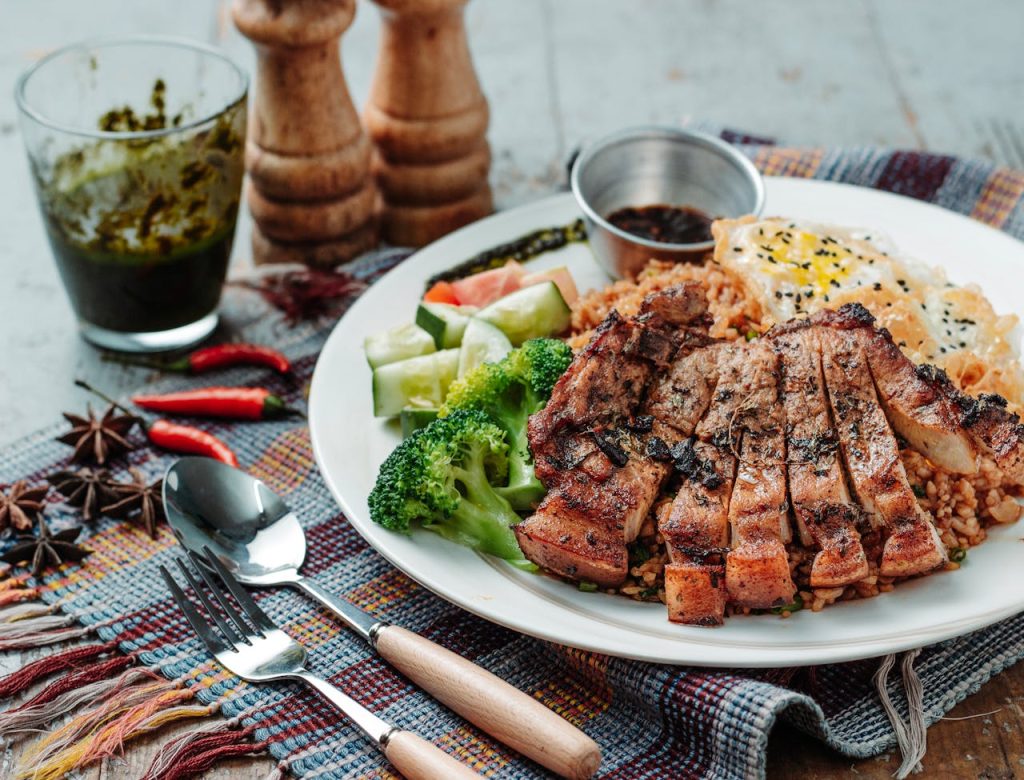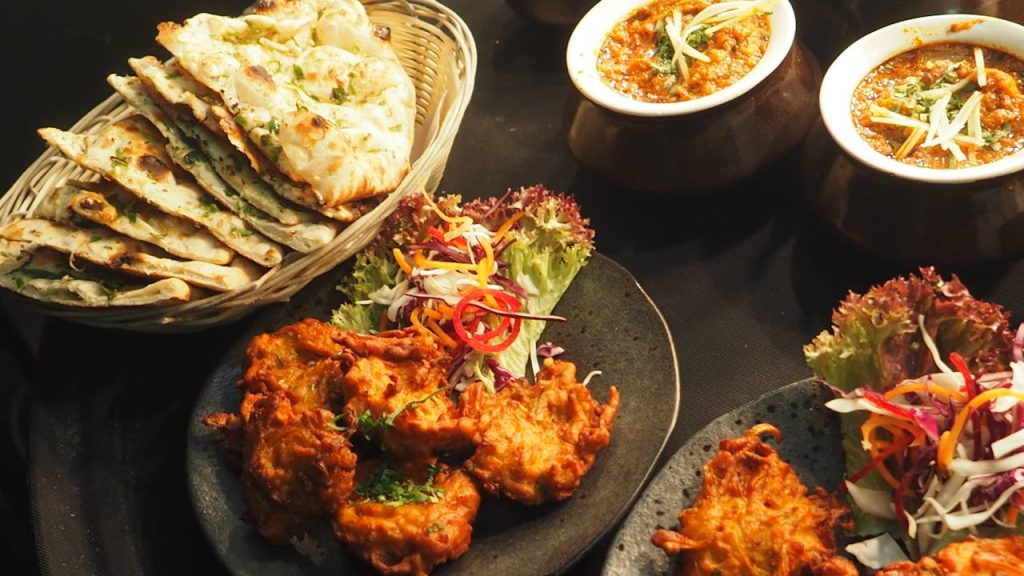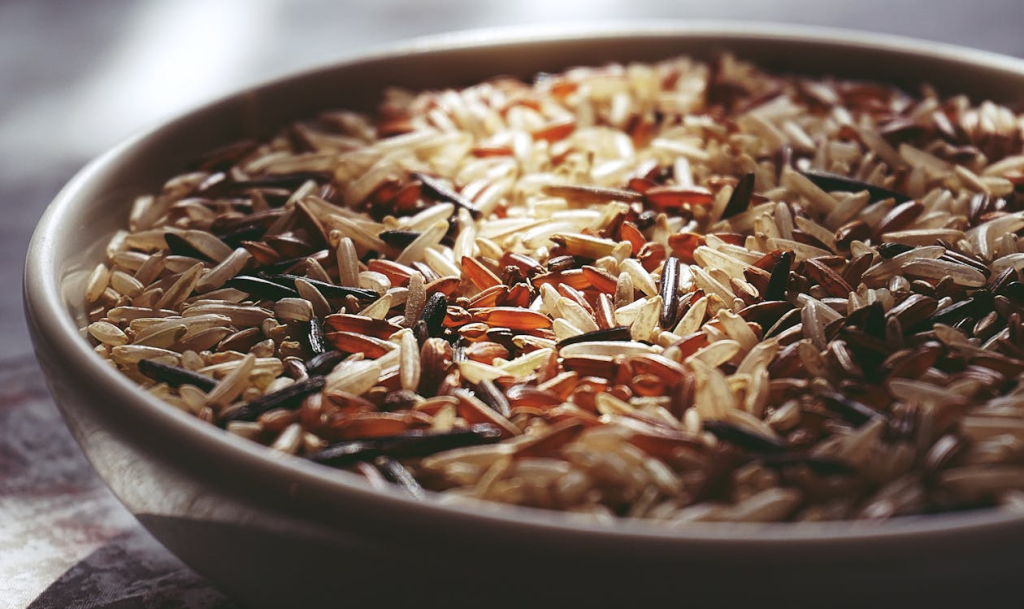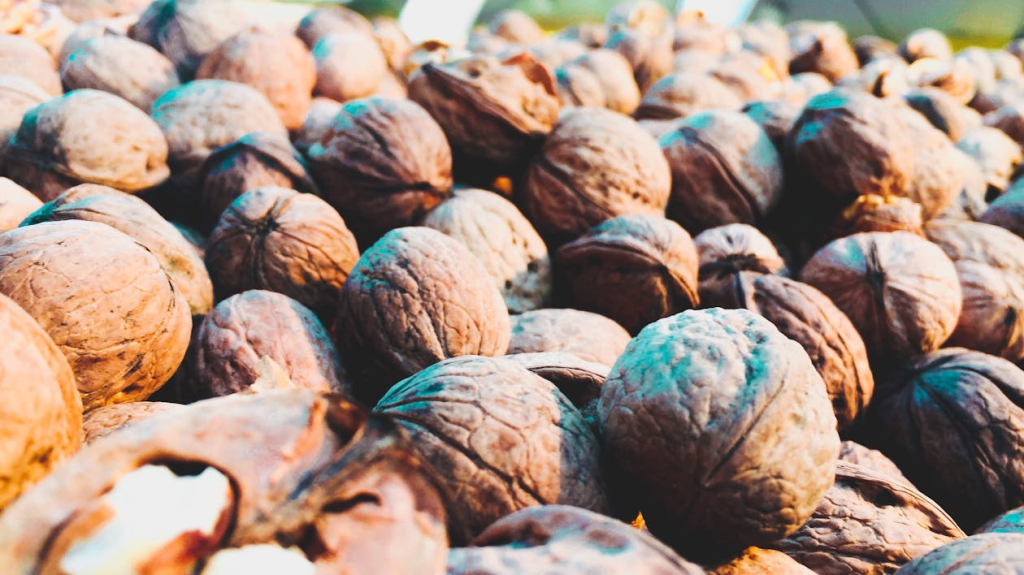Food
Food Allergies: Tips for a Safe and Delicious Diet
A food allergy is an immune system reaction triggered by consuming certain foods that the body mistakenly identifies as harmful. When someone with a food allergy ingests the specific food, their immune system overreacts, producing antibodies called immunoglobulin E (IgE) antibodies.

Living with food allergies creates a unique set of challenges and considerations. From the careful selection of grocery items to navigating social situations with grace and confidence, those with food allergies must approach every meal with a heightened sense of awareness. This comprehensive guide is designed to equip you with practical strategies and insights to lead a fulfilling life, where allergies don’t dictate your culinary enjoyment or social experiences.
Table of Contents
The Prevalence and Impact of Food Allergies
Introduction
The modern world grapples with a significant rise in the incidence of food allergies, with over 32 million Americans affected, a number that’s growing. It’s not just an issue of physical health; food allergies also impact emotional well-being, social interactions, and everyday activities like dining out or traveling.
Understanding Food Allergies
Defining the Basics
Food allergies occur when the immune system mistakenly identifies a specific food as harmful and triggers a variety of symptoms that can range from mild to severe. The top allergens include peanuts, tree nuts, milk, eggs, wheat, soy, fish, and shellfish.
Distinguishing Allergies from Intolerances
Understanding the difference between allergies and intolerances is crucial. Allergies involve the immune system and can be life-threatening, while intolerances, such as lactose intolerance, are typically digestive issues and are rarely dangerous.
Effects of Food Allergies
The impact of food allergies is more than just physical; the constant vigilance and stress can lead to anxiety, especially for children navigating allergies on their own.
What is Symptoms?
Food allergies can manifest with a variety of symptoms, which can range from mild to severe. Some common symptoms of food allergies include:
- Skin reactions: These can include hives, itching, eczema, or swelling (angioedema) of the skin, lips, face, tongue, or throat.
- Digestive symptoms: These may include nausea, vomiting, diarrhea, abdominal pain, or cramping.
- Respiratory symptoms: Food allergies can cause symptoms such as nasal congestion, runny nose, sneezing, coughing, wheezing, shortness of breath, or difficulty breathing.
- Oral symptoms: Some individuals may experience itching or tingling sensations in the mouth or throat, swelling of the lips or tongue, or even a metallic taste in the mouth.
- Cardiovascular symptoms: In severe cases, food allergies can lead to a sudden drop in blood pressure (hypotension), dizziness, fainting, rapid or weak pulse, or even shock.
- Anaphylaxis: This is a severe, life-threatening allergic reaction that can involve multiple systems of the body. Symptoms of anaphylaxis may include difficulty breathing, wheezing, swelling of the throat, rapid heartbeat, weak pulse, confusion, loss of consciousness, or cardiac arrest.
It’s important to note that the symptoms of food allergies can vary from person to person and may differ depending on the severity of the allergy and the amount of the allergen consumed. Additionally, symptoms may occur within minutes to hours after consuming the allergenic food. If someone experiences symptoms of a food allergy, it’s crucial to seek medical attention promptly, especially if they are experiencing symptoms of anaphylaxis.
Identifying and Diagnosing Food Allergies
Recognizing Symptoms and Reactions
The symptoms of an allergic reaction can affect multiple systems in the body, from the skin (hives) and respiratory systems (wheezing) to the gut (vomiting). In severe cases, anaphylaxis can be life-threatening and requires immediate medical attention.
Seeking Professional Diagnosis
Consulting an allergist for a proper diagnosis is the first step in managing food allergies. Blood tests and skin prick tests can confirm allergens, and an allergist will guide you in creating an effective management plan.
Dealing with Delayed-Onset Allergies
Not all food allergies produce immediate reactions. Delayed-onset allergies, as in the case of Celiac disease, can be tricky to diagnose and manage. Keeping a detailed food diary can be invaluable in identifying patterns and triggers.
Creating a Safe Home Environment
Adopting Allergen-Free Kitchen Practices
Transforming your kitchen into an allergy-safe space involves meticulous cleaning to avoid cross-contact and the effective separation of allergens from safe foods.
Understanding Labels and Hidden Allergens
Reading labels isn’t just about known allergens; it’s equally important to learn the various names and sources of common allergens that can be ‘hidden’ in a product’s ingredients.
Preventing Cross-Contamination at Home
Simple measures such as using separate cutting boards and utensils for allergens and non-allergens can significantly reduce the risk of cross-contamination.
Dining Out Safely
Communication is Key
Informing restaurant staff about your allergies should be clear and assertive. Use simple language and, if possible, consult the restaurant’s allergen menu or speak directly to the chef.
Choosing the Right Restaurants
Seek out restaurants with good practices for handling food allergies and look for accreditations and positive reviews from the allergy community.
Advocating for Safe Food Preparation
Don’t hesitate to advocate for safe preparation methods, even in busy kitchens. It’s not just about your meal; it’s about setting a standard for all diners with allergies.
Meal Planning and Recipe Modification
Developing Allergen-Conscious Meal Plans
Plan meals that are naturally free from allergens, and incorporate a wide variety of foods to ensure balanced nutrition.
Modifying Recipes for Allergies
Experiment with alternative ingredients and cooking techniques to recreate favorite dishes. There is an abundance of allergen-free ingredients and resources available to make your meals safe and delicious.
Adding Flavor to Allergen-Free Meals
Spices, herbs, and a range of cooking methods can transform bland into gourmet in allergen-safe cooking, ensuring a diet that’s both nutritious and satisfying.
Navigating Social Situations and Celebrations
Communicating Allergies Clearly
Educate your social circle about your allergies and needs, making it easier for them to accommodate you in their plans.
Inclusive Socializing
When hosting, take care to provide safe options for all dietary needs. When attending events, contribute to the menu, ensuring there’s something safe for you to enjoy.
Celebrating with Care
Mark special occasions with joy and care. Collaborate with those around you to ensure the celebration is safe and everyone feels included.
Empowering Children with Food Allergies
Fostering a Positive Perspective on Food
Encourage children to see food as enjoyable but to approach it with an understanding of its safety within their own dietary restrictions.
Teaching Effective Communication
Role-play and practice how to effectively communicate their allergies, teaching the language that will help them stay safe in a variety of situations.
Strategies for School and Social Settings
Work with school staff and friends’ parents to create a supportive environment for your child, from classroom celebrations to playdates.

Emotional Well-Being and Support
Addressing Psychological Impact
Recognize the emotional toll of living with food allergies and seek professional help or join support groups where you can share experiences and coping strategies.
Fostering Positivity and Self-Advocacy
Promote a positive mindset and empower yourself to advocate for your needs confidently and proactively.
Building a Support Network
Connect with others who share your challenges to build a supportive community. You’re not alone in your experience, and sharing stories can be incredibly validating and empowering.
Traveling with Food Allergies
Preparing for Safe Travel
Extensively research and plan your travel from the meals you’ll have at the airport to safe dining options at your destination.
Navigating Different Cuisines and Cultures
Learn about the common allergens and dishes in the cuisine of your destination. Phrases in the local language to communicate your allergies can be crucial.
Creating an Emergency Plan
Have an emergency plan in place for the unexpected, from carrying medications to knowing where to seek medical help.
Overcoming Common Challenges
Managing Uncertainty and Skepticism
In the face of skepticism, remain calm and educate others about the realities of food allergies. Offer resources, share your story, and explain the importance of their support.
Balancing Vigilance with Anxiety
It’s a fine line, but with time and experience, you’ll find the balance between staying informed and feeling overwhelmed. Trust your preparation and your ability to manage your allergies.
Advocacy and Allergy Awareness
Raising Awareness
Be an advocate for the allergy community. Raise awareness in your community, schools, and workplaces to promote understanding and support.
Supporting Allergy Research and Advancements
Participate in studies and efforts that contribute to our understanding of food allergies. Advances in research benefit the whole community.
Advocating for Safer Dining
Contribute to the dialogue around improved food labeling and restaurant practices. Your voice has the power to change policies and create safer environments for all.
Inspiring Stories of Resilience
Sharing Success Stories
Celebrate the victories, big and small. Share stories of how you, and others, have overcome the challenges of food allergies.
Positive Transformations
Strong communities are built on shared accomplishments. By sharing these stories, you can offer hope and inspiration to those struggling with their allergies.
Conclusion
Navigating food allergies is not just about steering clear of problematic foods; it’s about forging a pathway to a rich and unbounded life. With this in-depth guide, you are better equipped to transform the quest for safe and scrumptious eating into a rewarding adventure. By adopting these strategies, you can savor the flavors of life, free from the limitations of your dietary needs. Remember, your plate is a canvas, and your experience with food allergies can be an extraordinary masterpiece that inspires and nourishes others in the allergy community.
Video: Food Allergy, Causes, Signs and Symptoms, Diagnosis and Treatment by Medical Centric
Frequently Asked Questions (FAQ)
What is food allergy?
A food allergy is an immune system reaction triggered by consuming certain foods that the body mistakenly identifies as harmful. When someone with a food allergy ingests the specific food, their immune system overreacts, producing antibodies called immunoglobulin E (IgE) antibodies. These antibodies then trigger the release of chemicals, such as histamine, which can cause a range of symptoms throughout the body.
Food allergies can develop at any age, but they are most commonly diagnosed in childhood. Some individuals may outgrow their food allergies over time, but others may have lifelong allergies. Common food allergens include peanuts, tree nuts, milk, eggs, soy, wheat, fish, and shellfish.
It’s important for individuals with food allergies to carefully read food labels, communicate their allergies to others, and take steps to avoid exposure to their allergens to prevent allergic reactions. In severe cases, they may need to carry emergency medication, such as epinephrine injectors, to use in case of anaphylaxis. Consulting with a healthcare professional for diagnosis, management, and personalized advice is crucial for individuals with food allergies.
What Symptoms of Food Allergies?
Food allergies can manifest with a variety of symptoms, which can range from mild to severe. Some common symptoms of food allergies include:
1. Skin reactions: These can include hives, itching, eczema, or swelling (angioedema) of the skin, lips, face, tongue, or throat.
2. Digestive symptoms: These may include nausea, vomiting, diarrhea, abdominal pain, or cramping.
3. Respiratory symptoms: Food allergies can cause symptoms such as nasal congestion, runny nose, sneezing, coughing, wheezing, shortness of breath, or difficulty breathing.
4. Oral symptoms: Some individuals may experience itching or tingling sensations in the mouth or throat, swelling of the lips or tongue, or even a metallic taste in the mouth.
5. Cardiovascular symptoms: In severe cases, food allergies can lead to a sudden drop in blood pressure (hypotension), dizziness, fainting, rapid or weak pulse, or even shock.
6. Anaphylaxis: This is a severe, life-threatening allergic reaction that can involve multiple systems of the body. Symptoms of anaphylaxis may include difficulty breathing, wheezing, swelling of the throat, rapid heartbeat, weak pulse, confusion, loss of consciousness, or cardiac arrest.
What is the common foods for allergies?
Common foods that are known to cause allergies include:
1. Peanuts
2. Tree nuts (such as almonds, walnuts, cashews, and pecans)
3. Milk
4. Eggs
5. Soy
6. Wheat
7. Fish (such as salmon, tuna, and cod)
8. Shellfish (such as shrimp, crab, and lobster)
These foods are often referred to as the “big eight” allergens because they account for the majority of food allergies. However, other foods can also cause allergic reactions in some individuals. These may include sesame seeds, mustard, celery, lupin, and sulfites (which are commonly found in wine and dried fruits), among others.
Food
Healthy Rice Varieties: Nutrition and Health Benefits

Rice is a staple food for over half the world’s population, offering versatility and a rich nutritional profile. While white rice is commonly consumed, exploring other rice varieties can provide additional health benefits. This comprehensive guide delves into five healthy rice options—brown, black, red, purple, and wild rice—highlighting their unique nutritional advantages and how to incorporate them into your diet.
Nutritional Overview of Rice
Rice is primarily composed of carbohydrates, making it an excellent energy source. It also contains varying amounts of protein, fiber, vitamins, and minerals, depending on the type.
Brown Rice
Brown rice is a whole grain that retains its bran and germ, providing more fiber, B vitamins, and minerals compared to white rice. It’s linked to improved blood glucose control, heart health, and weight management. However, brown rice may contain higher levels of arsenic due to its intact outer layer. To reduce arsenic exposure, rinse brown rice thoroughly and cook it with a higher water-to-rice ratio.
White Rice
White rice undergoes milling and polishing, removing the bran and germ. This process results in a softer texture and longer shelf life but reduces fiber and nutrient content. Enriched white rice has some nutrients added back, such as iron and B vitamins, but it still lacks the fiber found in whole grains. White rice can be part of a healthy diet when consumed in moderation and paired with nutrient-rich foods.
Black Rice
Black rice, also known as forbidden rice, is rich in anthocyanins—antioxidants that may aid in blood glucose control and cardiovascular health. Its deep color and nutty flavor make it a nutritious and visually appealing addition to various dishes.
Red Rice
Red rice is another whole grain variety high in anthocyanins, offering antioxidant benefits. It has a nutty flavor and is commonly consumed in various countries. Red rice can be a nutritious alternative to white rice in many recipes.
Wild Rice
Wild rice is technically an aquatic grass seed, not a true rice. It’s high in protein and resistant starch, which can benefit blood sugar management. Wild rice’s chewy texture and earthy flavor make it a unique addition to salads, soups, and pilafs.
Health Benefits of Rice
Energy Source
Rice is a rich source of carbohydrates, providing the body with energy necessary for daily activities. It’s particularly beneficial for athletes and individuals with high energy demands.
Digestive Health
Whole grain varieties like brown, black, red, and wild rice are high in fiber, which aids in digestion and promotes a healthy gut microbiome. Fiber also contributes to satiety, helping with weight management.
Heart Health
The fiber, antioxidants, and magnesium found in whole grain rice varieties support heart health by reducing cholesterol levels and improving blood pressure.
Blood Sugar Control
Whole grain rice has a lower glycemic index compared to white rice, leading to slower digestion and a more gradual rise in blood sugar levels. This makes it a better choice for individuals managing diabetes.
Understanding Arsenic in Rice
Arsenic is a naturally occurring element that can be found in rice, with brown rice containing higher levels due to its outer layers. To minimize arsenic exposure:
- Rinse rice thoroughly before cooking.
- Use a higher water-to-rice ratio (e.g., 6:1) and drain excess water.
- Choose rice grown in regions with lower arsenic levels, such as California.
Incorporating Healthy Rice Varieties into Your Diet
To maximize the health benefits of rice:
- Pair rice with vegetables, lean proteins, and healthy fats.
- Experiment with different rice varieties to add diversity to your meals.
- Consider cooling cooked rice before consumption to increase resistant starch content, which can support gut health.
Conclusion
Exploring various rice types can enhance your diet’s nutritional value and flavor. By understanding the benefits of brown, black, red, purple, and wild rice, and implementing proper cooking methods to reduce arsenic exposure, you can enjoy rice as a healthy and delicious staple in your meals.
Note: This article is for informational purposes only and does not constitute medical advice.
Food
Top 7 Magnesium-Rich Nuts and the Best Ways to Eat Them for Maximum Health Benefits

Magnesium is one of the most essential yet often overlooked minerals in the human diet. Responsible for over 300 bodily functions, it supports muscle performance, nerve function, energy production, and bone health. Luckily, nature has given us a delicious way to keep our magnesium levels up—nuts.
In this article, we dive deep into 7 of the best magnesium-rich nuts, their individual health perks, and the smartest ways to include them in your daily routine for optimum results.
Why Is Magnesium So Important?
Magnesium helps regulate blood pressure, supports heart rhythm, balances blood sugar, and even plays a role in mood regulation. Despite its importance, studies suggest that up to 70% of people are magnesium-deficient.
Daily Recommended Magnesium Intake:
- Men (31+ years): 420 mg/day
- Women (31+ years): 320 mg/day
Let’s explore how magnesium-rich nuts can help you reach these targets naturally.

1. 🥜 Almonds: A Powerhouse of Nutrients
Magnesium: 270 mg per 100 grams
Almonds are loaded with vitamin E, protein, fiber, and monounsaturated fats. Their high magnesium content supports heart health, brain function, and blood sugar control.
Best Ways to Eat Almonds:
- Soak overnight for better absorption
- Add to smoothies, oatmeal, or yogurt
- Use almond butter in wraps or toast
Note: Choose raw or dry-roasted almonds over salted versions to avoid excess sodium.

2. 🌰 Cashews: Creamy, Versatile, and Rich in Magnesium
Magnesium: 260 mg per 100 grams
Cashews not only taste great but also provide healthy fats, copper, and zinc. They support bone health, immunity, and weight management.
Smart Ways to Consume:
- Eat raw or make creamy cashew sauces
- Add to curries or vegan desserts
- Include in trail mixes
Tip: Limit intake if you’re prone to kidney stones due to oxalate content.

3. 🥥 Brazil Nuts: Magnesium + Selenium Magic
Magnesium: 376 mg per 100 grams
Brazil nuts are the ultimate combo of magnesium and selenium. They support thyroid function, reduce inflammation, and boost immunity.
Best Consumption Tips:
- Eat 1–2 nuts daily (enough selenium for the day!)
- Chop into granola or snack mixes
- Mix with dark chocolate for an antioxidant-rich dessert
Warning: Don’t overeat – too much selenium can be harmful.

4. 🌰 Walnuts: Great for the Brain and Magnesium Levels
Magnesium: 158 mg per 100 grams
Rich in omega-3s and antioxidants, walnuts enhance brain health, reduce inflammation, and improve memory retention.
Best Ways to Eat Walnuts:
- Add to salads or smoothie bowls
- Create walnut milk at home
- Snack on them with dried fruit

5. 🥜 Peanuts: Affordable, Accessible, and Magnesium-Rich
Magnesium: 168 mg per 100 grams
Technically legumes, peanuts are high in magnesium, folate, and protein. They help manage blood sugar and support muscle function.
How to Include in Diet:
- Use unsweetened peanut butter in recipes
- Boiled peanuts are a healthy snack
- Add crushed peanuts to stir-fry or satay sauces

6. 🌰 Pistachios: Magnesium Plus Weight-Friendly
Magnesium: 121 mg per 100 grams
These green gems are high in potassium, fiber, and antioxidants. Pistachios are ideal for eye health, blood pressure control, and weight management.
Great Ways to Enjoy:
- Snack on unsalted in-shell pistachios
- Make pistachio pesto for pasta
- Add to baked goods or granola

7. 🌰 Hazelnuts: Magnesium + Skin Health Combo
Magnesium: 163 mg per 100 grams
Hazelnuts are rich in vitamin E and antioxidants, promoting glowing skin, better metabolism, and improved insulin sensitivity.
Smart Eating Ideas:
- Sprinkle crushed hazelnuts over cereal
- Use hazelnut butter on toast or crackers
- Make your own clean, healthy Nutella
Tips to Boost Magnesium Absorption
Simply eating magnesium-rich nuts isn’t enough. Here’s how to absorb more of it:
- Soak nuts overnight to reduce antinutrients
- Pair with vitamin B6-rich foods (e.g., bananas, avocados)
- Limit caffeine and alcohol which deplete magnesium
- Eat in moderation – 1 handful (20–30g) is sufficient per day
Magnesium in Nuts: Quick Comparison Chart
| Nut | Magnesium (mg / 100g) |
|---|---|
| Brazil Nuts | 376 mg |
| Almonds | 270 mg |
| Cashews | 260 mg |
| Peanuts | 168 mg |
| Hazelnuts | 163 mg |
| Walnuts | 158 mg |
| Pistachios | 121 mg |
Make Nuts Your Go-To Magnesium Source
Whether you’re trying to boost energy levels, reduce muscle cramps, improve heart health, or enhance cognitive function, magnesium-rich nuts are an easy and effective dietary solution. Versatile, portable, and delicious—they’re a snack you’ll never feel guilty about.
So, the next time hunger strikes, reach for a handful of nature’s superfoods and give your body the magnesium it craves.
Stay healthy. Stay nourished.
Food
Prime Hydration Drink: Hype or Hydrator?
In the quest for excellence, hydration plays a pivotal role. Enter Prime Hydration, a cutting-edge solution designed to propel athletes beyond their limits.

In the world of fitness and wellness, hydration is paramount. Whether you’re an athlete pushing your limits or simply someone striving for optimal health, staying hydrated is crucial for peak performance and overall well-being. Enter Prime Hydration Drink—a product that promises to revolutionize the way we hydrate. But amidst the marketing hype, it’s essential to delve deeper to discern whether Prime Hydration is truly a game-changer or just another overhyped beverage.
Table of Contents
I. Introduction
Attention Grabber
Picture this: A dedicated athlete, pushing through their workout with determination and drive. But suddenly, they hit a wall. Fatigue sets in, their muscles feel sluggish, and their performance suffers—all because of dehydration. It’s a scenario familiar to many who strive for peak performance in their fitness pursuits.
Introducing Prime Hydration
In the quest for excellence, hydration plays a pivotal role. Enter Prime Hydration, a cutting-edge solution designed to propel athletes beyond their limits. As we delve deeper into the world of Prime Hydration, you’ll discover how this innovative formula can revolutionize your approach to hydration and unlock your true potential.
II. What is Prime Hydration Drink?
Defining Prime Hydration
Prime Hydration isn’t just another sports drink; it’s a precision-engineered blend formulated to elevate your hydration game to new heights. Designed with one goal in mind—optimized hydration for peak performance—Prime Hydration stands as a beacon of excellence in the realm of fitness and athletics.
The Science Behind the Formula
At the heart of Prime Hydration lies a meticulously crafted formula backed by scientific research and innovation. By incorporating a synergistic blend of electrolytes, essential minerals, and hydration boosters, Prime Hydration ensures rapid replenishment of fluids and nutrients lost during intense physical activity.
Key Features
What sets Prime Hydration Drink apart from the competition? Firstly, its rapid absorption capabilities ensure that hydration is delivered swiftly to parched muscles, promoting sustained energy and endurance. Additionally, Prime Hydration boasts a meticulously balanced electrolyte profile, precisely calibrated to support optimal fluid balance and muscle function. And let’s not forget its refreshing taste—a delightful fusion of flavors that rejuvenates the senses with every sip.
III. The Importance of Hydration for Performance
Hydration is not merely a matter of quenching thirst—it’s a cornerstone of peak physical performance. Here’s why:
Regulating Body Temperature:
During exercise, the body generates heat, which must be dissipated to prevent overheating. Adequate hydration supports this process by facilitating sweat production, which helps regulate body temperature and prevent heat-related illnesses such as heat exhaustion or heatstroke.
Supporting Cardiovascular Function
Hydration is essential for maintaining optimal blood volume and circulation. Dehydration can lead to a decrease in blood volume, forcing the heart to work harder to pump blood to vital organs and muscles. This increased strain on the cardiovascular system can impair performance and increase the risk of cardiovascular issues during exercise.
Maintaining Energy Levels
Water is involved in virtually every metabolic process in the body, including the conversion of food into energy. Dehydration disrupts these processes, leading to decreased energy levels and fatigue. Proper hydration ensures that nutrients are efficiently delivered to cells, providing the energy needed to power through workouts and activities.
Consequences of Dehydration During Exercise
The effects of dehydration on athletic performance are profound and far-reaching. Fatigue sets in more quickly, leading to decreased endurance and diminished strength and power output. Dehydration can also impair cognitive function, coordination, and reaction time, increasing the risk of accidents and injuries during exercise.
Insights from Experts and Studies
Numerous studies have underscored the critical role of hydration in athletic performance. Research has shown that even mild dehydration—equivalent to a loss of just 2% of body weight—can significantly impair physical and cognitive performance. Experts recommend pre-hydrating before exercise, maintaining hydration during activity, and rehydrating afterward to optimize performance and recovery.
For example, a study published in the Journal of Athletic Training found that cyclists who were dehydrated by just 2% experienced reduced endurance and increased perceived exertion compared to those who were adequately hydrated. Similarly, a review published in Sports Medicine concluded that dehydration negatively impacts aerobic performance, strength, and power output across various sports and activities.
IV. How Prime Hydration Enhances Performance
Addressing Specific Hydration Needs
Prime Hydration Drink’s formula is meticulously crafted to meet the specific hydration demands of athletes during exercise. Unlike conventional sports drinks that may contain excessive sugars or artificial additives, Prime Hydration focuses on delivering essential electrolytes, minerals, and hydration boosters in optimal ratios. These key components work synergistically to replenish fluids lost through sweat, maintain electrolyte balance, and support sustained energy production.
Rapid Absorption for Quick Replenishment
One of the standout features of Prime Hydration is its rapid absorption rate, which ensures swift hydration replenishment during workouts. This is achieved through advanced hydration technology that enhances fluid uptake at the cellular level, allowing athletes to rehydrate more efficiently and effectively. Whether it’s a grueling training session or a competitive event, Prime Hydration delivers the hydration needed to stay at the top of your game.
Real-Life Success Stories:
I used to struggle with cramps and fatigue during long runs, especially in hot weather. Since incorporating Prime Hydration into my hydration routine, I’ve noticed a significant improvement in my performance and endurance. The rapid absorption and balanced electrolyte profile keep me feeling strong and hydrated, mile after mile.Sarah, Marathon Runner
As a CrossFit athlete, staying hydrated is crucial for maintaining energy and performance during intense WODs. Prime Hydration has become my go-to hydration solution because it delivers results. I feel more energized and focused throughout my workouts, and I’ve noticed a reduction in muscle cramps and fatigue. Prime Hydration has truly elevated my training to the next level.Jake, CrossFit Athlete
V. Hype or Hydrator?
Deconstructing the Ingredients List
- Electrolytes: Prime Hydration contains essential electrolytes such as sodium, potassium, magnesium, and calcium. These minerals play a crucial role in maintaining fluid balance, nerve function, and muscle contraction. Sodium and potassium, in particular, help regulate hydration levels by facilitating fluid absorption and retention in the body.
- Vitamins: Some formulations of Prime Hydration may include added vitamins, such as vitamin C or B vitamins. These vitamins can contribute to overall health and well-being, supporting immune function, energy metabolism, and antioxidant defense mechanisms.
- Added Sugars: Prime Hydration aims to minimize added sugars, opting for natural sweeteners or low-calorie alternatives like stevia or monk fruit extract. While some level of sugar may be necessary for flavoring, excessive sugar intake can lead to energy crashes and negative health effects. Prime Hydration prioritizes balance, offering a refreshing taste without compromising on health.
Analyzing Potential Benefits
- Electrolytes: By replenishing electrolytes lost through sweat, Prime Hydration helps maintain proper hydration levels, supports muscle function, and prevents dehydration-related fatigue and cramping.
- Vitamins: Added vitamins contribute to overall health and well-being, providing essential nutrients that support immune function, energy production, and recovery processes.
- Low Added Sugars: Prime Hydration’s minimal sugar content ensures sustained energy without the risk of energy crashes or spikes in blood sugar levels. This allows for consistent hydration and performance without compromising on health.
VI. Prime Hydration vs. Other Hydration Solutions
Comparing Prime Hydration to Traditional Sports Drinks and Plain Water
Prime Hydration Drinks vs. Traditional Sports Drinks
Traditional sports drinks often contain high levels of sugar and artificial additives, which can lead to energy crashes and dehydration in the long run. In contrast, Prime Hydration offers a healthier alternative with its low sugar content and natural ingredients. While sports drinks may provide some electrolytes, they often lack the precise balance found in Prime Hydration’s formula, making them less effective for optimizing hydration during exercise.
Prime Hydration vs. Plain Water
Plain water is undoubtedly essential for hydration, but it may not always be sufficient, especially during intense or prolonged exercise. While water provides hydration, it does not replenish electrolytes lost through sweat, which are crucial for maintaining fluid balance and supporting muscle function. Prime Hydration offers the best of both worlds—a hydration solution that delivers essential electrolytes and fluids quickly and efficiently.

Advantages of Prime Hydration Drink
Balanced Electrolyte Profile
Unlike many sports drinks that focus primarily on sodium and sugar, Prime Hydration boasts a meticulously balanced electrolyte profile that includes sodium, potassium, magnesium, and calcium. This comprehensive blend ensures optimal hydration and supports muscle function, endurance, and recovery.
Rapid Absorption
Prime Hydration’s advanced hydration technology allows for rapid absorption at the cellular level, ensuring that fluids and electrolytes are quickly delivered to thirsty muscles. This means faster hydration replenishment during workouts and better performance overall.
Natural Ingredients
Prime Hydration is made with natural ingredients and free from artificial flavors, colors, and preservatives. This makes it a healthier and more wholesome option compared to many traditional sports drinks on the market.
Addressing Concerns and Misconceptions
Concern: Sugar Content
Many people are wary of sports drinks due to their high sugar content, which can lead to energy crashes and weight gain. Prime Hydration addresses this concern by offering low sugar options that provide the necessary hydration without the excess calories.
Misconception: Hydration Isn’t Important
Some individuals may underestimate the importance of hydration, especially during exercise. Prime Hydration helps dispel this misconception by highlighting the critical role of hydration in performance and offering a convenient and effective solution for staying hydrated during workouts.
VII. Is Prime Hydration good for kids?
Inquiring about the safety of Prime Hydration for kids? The succinct response, as per experts, is affirmative – Prime Hydration is generally considered safe for children when consumed in moderation.
Malina Malkani is a pediatric registered dietitian is not recommended Prime Hydration for kids, and She suggest some healthier alternatives for maintaining hydration. She cites a few reasons why: 1. Use of Sugar Substitutes or Non-nutritive sweeteners (NNS), 2. Inappropriate Vitamin and Electrolyte Levels, 3. Unnecessary Ingredients, & 4. Misleading Marketing.
Dr. Christina Johns, a respected board-certified pediatrician situated in Annapolis, Maryland, emphasizes the importance of maintaining a balanced approach to hydration in children.
While it is not unsafe to consume Prime Hydration in moderation, I stand by the basics [of nutrition] and encourage plenty of water as the basis for hydration in children.Dr. Christina Johns
Dr. Johns, who serves as the official spokesperson for the American Academy of Pediatrics and holds the position of senior medical advisor at PM Pediatric Care, highlights a notable trend among children’s preferences for Prime Hydration. “Because sports drinks like Prime Hydration are designed to have a pleasant, sweet flavor, it is tempting to misuse them, drinking them casually on a daily basis,” she observes.
According to Catherine Gervacio, a registered nutritionist-dietitian for the E-Health Project in Arlington, Virginia, children “do not require the BCAAs found in Prime.” She elaborates, stating, “Children and teenagers are still in their growth and development stages, typically obtaining sufficient BCAAs from their diets.”
Melissa Boufounos, a certified holistic nutritionist in Ontario who specializes in sports nutrition, warns that Prime’s advertising is misleading.
Because of the celebrity and athlete endorsements of Prime Hydration, teen and adolescent athletes can be easily manipulated into believing these drinks support top athletic performance when they don’tMelissa Boufounos
Boufounos further notes that while Prime Hydration Drinks contain vitamins, this does not necessarily equate to healthiness. “Excessive supplemental vitamin A intake can be harmful,” she warns. “Prime Hydration provides 100% of the daily value of vitamin A. If children consume more than one per day, consume other foods fortified with vitamin A, or take a multivitamin providing vitamin A, they could surpass the upper limit.”
Both Gervacio and Boufounos identified potential risks associated with excessive electrolyte intake for children. “Prime Hydration Drinks aim to replenish electrolytes but are tailored to adult needs,” explains Gervacio. “Children and teens do not require such high levels, potentially leading to electrolyte imbalances affecting kidney function and blood pressure.”
Malina Malkani suggests parents consider these healthier and generally more cost-effective alternatives to ensure their children stay well-hydrated:
- Water should be the primary source of hydration for kids. Encourage your children to drink water throughout the day, especially when they are active.
- Homemade electrolyte solutions can be beneficial for children engaged in intense physical activities and in need of extra electrolytes. You can easily make homemade electrolyte drinks using water, a pinch of salt, and a touch of natural sweeteners like honey or 100% fruit juice.
- Fresh fruits such as watermelon, cucumber, and oranges have high water content and can aid in hydration while providing essential nutrients and fiber.
- Coconut water, naturally rich in electrolytes, is found inside coconuts. Prioritize brands without added sugars by checking labels.
VIII. Does Prime Hydration Drink any health risks?
Prime Hydration drink poses minimal health risks when consumed in moderation and as part of a balanced diet. However, excessive or improper consumption may lead to potential risks. Here are some considerations:
- Electrolyte Imbalance: Prime Hydration drinks contain electrolytes such as sodium, potassium, magnesium, and calcium, which are essential for bodily functions. Consuming excessive amounts of electrolytes can disrupt the body’s electrolyte balance, leading to potential health issues such as dehydration or electrolyte imbalances.
- Added Sugars: Some formulations of Prime Hydration drinks may contain added sugars or sweeteners. Excessive sugar intake can contribute to weight gain, tooth decay, and other health problems if consumed regularly in large quantities.
- Vitamin Overload: Prime Hydration drinks may contain added vitamins, which can be beneficial in moderation. However, excessive intake of certain vitamins, such as vitamin A, can be harmful to health.
- Caffeine Content: Some energy-focused variants of Prime Hydration drinks may contain caffeine. While moderate caffeine consumption is generally considered safe for most people, excessive intake can lead to caffeine-related side effects such as jitteriness, insomnia, or increased heart rate.
- Individual Sensitivities: Individuals with certain health conditions or sensitivities may need to exercise caution when consuming Prime Hydration drinks. For example, those with kidney issues may need to limit their intake of electrolytes, while individuals with diabetes should be mindful of added sugars.
Overall, Prime Hydration drinks can be part of a balanced lifestyle when consumed in moderation and as part of a healthy diet. However, it’s essential to be mindful of portion sizes, sugar content, and individual health considerations to minimize any potential risks to health. Consulting with a healthcare professional can provide personalized guidance based on individual health needs and concerns.
IX. Conclusion
In conclusion, Prime Hydration emerges as a game-changer in the realm of fitness and athletic performance. By addressing specific hydration needs with its balanced electrolyte profile and offering rapid absorption for quick replenishment, Prime Hydration empowers athletes to unlock their peak potential. Whether you’re a seasoned athlete or a weekend warrior, prioritizing hydration is essential for optimizing performance and achieving your fitness goals.
As you embark on your fitness journey, remember to consider your hydration needs during workouts and explore Prime Hydration as a solution. With its natural ingredients, low sugar content, and proven effectiveness, Prime Hydration offers a smarter and healthier approach to staying hydrated during exercise.
-

 Personal Care8 months ago
Personal Care8 months agoWhy Regular Massages Could Be the Game-Changer Your Body and Mind Crave
-

 Mental Health7 months ago
Mental Health7 months agoHow to Overcome Phobias: 15 Positive Psychology-Based Strategies That Really Work
-

 Lifestyle7 months ago
Lifestyle7 months agoWhen Is It Time To Get a Divorce? Emotional, Mental & Practical Signs to Know
-

 Fitness7 months ago
Fitness7 months ago6 Quick Morning Exercises to Burn Belly Fat All Day
-

 Mental Health7 months ago
Mental Health7 months agoWhat Is A Depression Attack? Symptoms, Causes & How To Cope With One
-

 Lifestyle7 months ago
Lifestyle7 months agoHow to Improve Egg Quality for Fertility: Science, Lifestyle and Expert Tips
-

 Food7 months ago
Food7 months agoHealthy Rice Varieties: Nutrition and Health Benefits
-

 Personal Care7 months ago
Personal Care7 months agoHow to Reparent Your Inner Child: Healing and Self-Compassion



